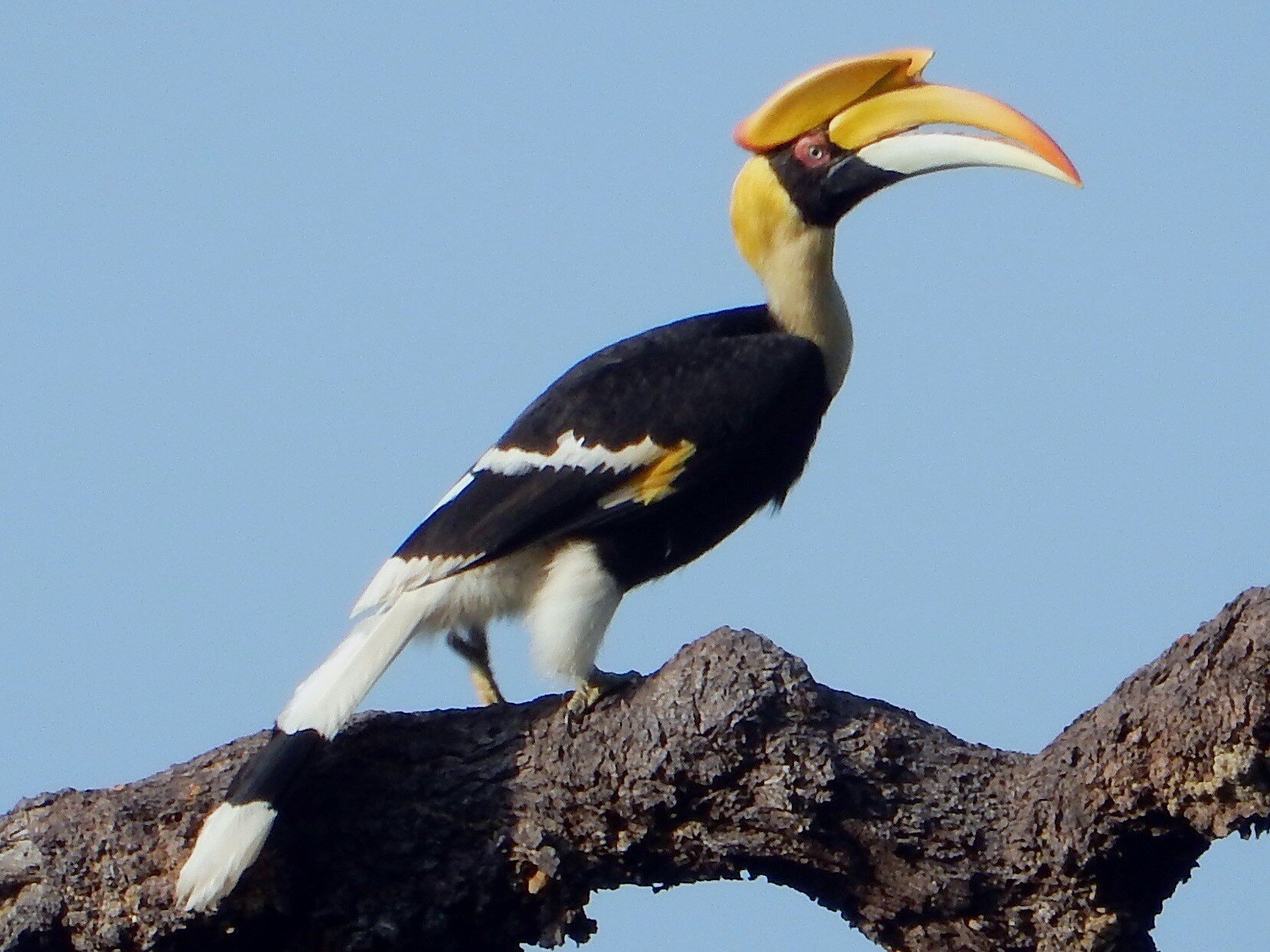Biodiversity & Environment
Hornbill Habitat Loss
- 13 Aug 2020
- 5 min read
Why in News
A study based on satellite data has indicated a high rate of deforestation in major hornbill habitats in Arunachal Pradesh and a part of Assam.
Key Points
- The study fine-scale satellite imagery to assess Papum Reserve Forest (RF) adjoining Pakke Tiger Reserve (Pakhui Tiger Reserve) in Arunachal Pradesh.
- The results show the loss and degradation of critical hornbill habitat in the biologically rich forests of the Indian Eastern Himalaya.
- The satellite data pointed to alarming deforestation rates in Papum RF with annual loss rates as high as 8.2 sq.km. as per estimates from 2013-2017 where forest cover declined to 76% of the total RF area.
- According to the Global Forest Watch 2020 report, Arunachal Pradesh lost 1,110 sq.km. of primary forest from 2002-2019.
- These areas are affected by illegal logging and ethnic conflict.
- The forests are under pressure due to agricultural expansion, conversion to plantations or logging.
Papum Reserve Forest
- Papum Reserve Forest is geographically situated in the south west of East Kameng district in Arunachal Pradesh.
- It is surrounded by Itanagar Wildlife Sanctuary to the east and Pakke Wildlife Sanctuary to the west.
- It is a part of the Indo-Burma Biodiversity hotspot in India.
- There are four Biodiversity Hostpots in India : Himalaya, Indo-Burma, Sundalands and Western Ghats and Sri Lanka.
- Papum Reserve Forest forms part of the Eastern Himalayas Endemic Bird Area.
- An Endemic Bird Area is an area of land identified by BirdLife International as being important for habitat-based bird conservation because it contains the habitats of restricted-range bird species.
- BirdLife International is a global partnership of non-governmental organizations that strives to conserve birds and their habitats.
- It is covered by Subtropical Dry Evergreen and Semi-evergreen Forests, while the higher areas are under Subtropical Broadleaf Hill Forest cover.
Hornbills
- The hornbills (Bucerotidae) are a family of birds found in tropical and subtropical Africa and Asia.
- India is home to nine species of hornbills. The northeastern region has the highest diversity of hornbill species within India.
- Papum RF is a nesting habitat of three species of hornbills: the great hornbill (Buceros bicornis), wreathed hornbill (Aceros undulatus) and the Oriental pied hornbill (Anthracoceros albirostris), Wreathed and Oriental Pied. The 862 sq.km. Pakke reserve houses a fourth species, the Rufous-necked hornbill (Aceros nipalensis) species are found here.
- The great hornbill is the state bird of Arunachal Pradesh and Kerala.
- Significance:
- They are the cultural symbols of some ethnic communities in the northeast, specifically the Nyishi of Arunachal Pradesh.
- They are referred to as ‘forest engineers’ or ‘farmers of forest’ for playing a key role in dispersing seeds of tropical trees and indicate the prosperity and balance of the forest they build nests in.
- The Hornbill festival celebrated in Nagaland is named after the bird – Hornbill which is the most revered and admired bird for the Nagas.
- Conservation Status:
- Currently, 26 out of the 62 species (40%) of hornbills are Globally Threatened or Near Threatened with extinction, with all other species listed as Least Concern, according to the International Union for Conservation of Nature (IUCN) Red List of Threatened Species.
- The great hornbill is evaluated as vulnerable.
- It is protected at the highest level under Schedule I of the Wildlife Protection Act, 1972.
- Threats:
- Hornbills are hunted for their casques — upper beak — and feathers for adorning headgear. They are also poached for their meat and medicinal value of their body parts.
- A conservation programme promoting the use of fibre-glass beaks for headgear instead of real hornbill casques has helped reduce some threat to it.
- Illegal logging i.e. cutting of tall trees where the hornbill birds nest and feed has led to destruction of its natural habitat.
- Hornbills are hunted for their casques — upper beak — and feathers for adorning headgear. They are also poached for their meat and medicinal value of their body parts.
Way Forward
The results of the study underscore the need for Hornbill habitat conservation efforts in India. Hornbill conservation must proceed along the twin paths of weaning away tribal hunters through the provision of substitutes, and nursing forest fragments back to health using science.






